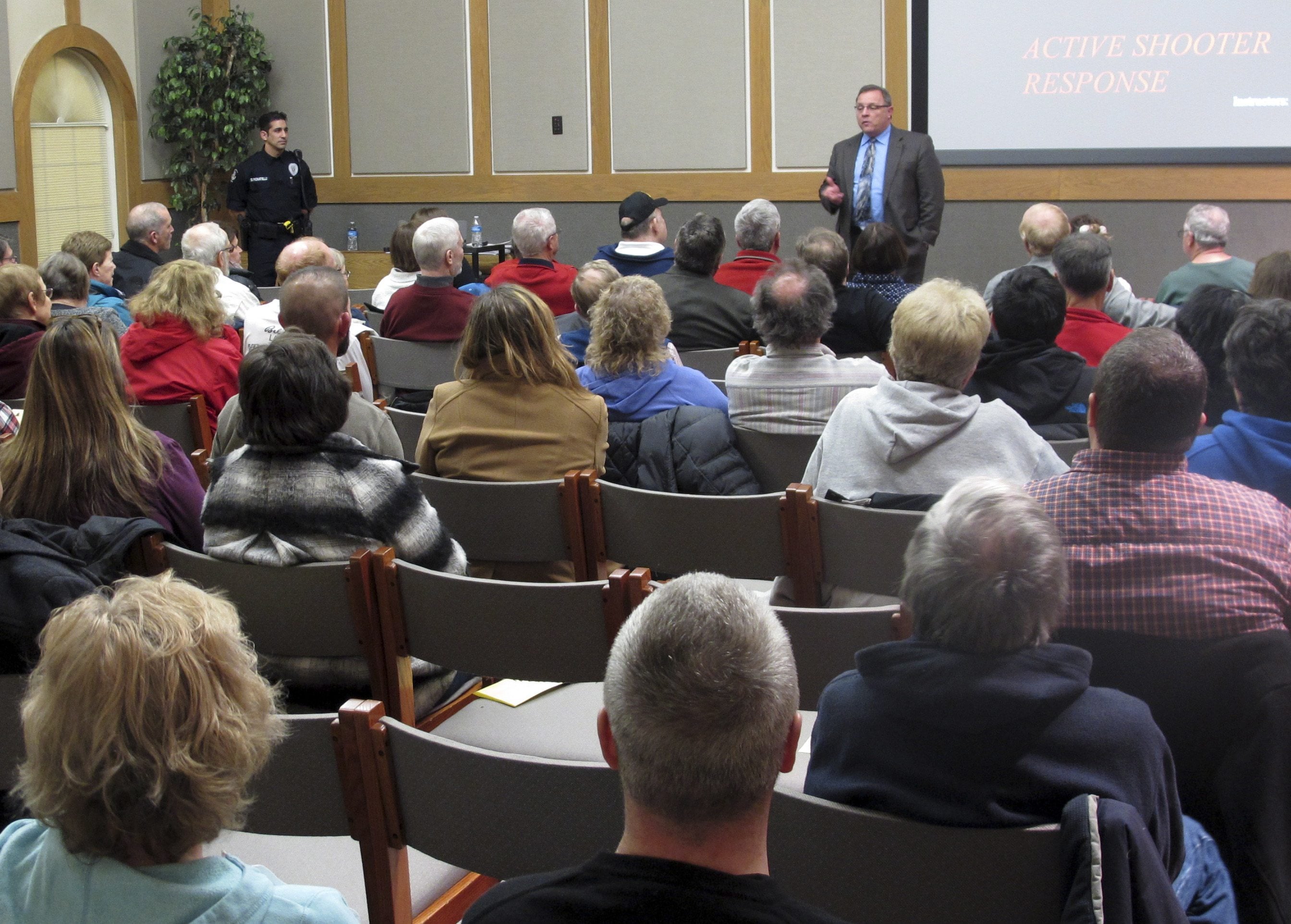WESTERVILLE, Ohio — Study your surroundings. Find exits. Identify makeshift weapons. Americans are gleaning those tips and others as they pack classes on how to react to and survive a shooting.
Such training is already common at schools, colleges and businesses, but sessions for the general public are the next step in confronting fears of mass violence that have been around for years and, for many, came to a head after the 1999 Columbine High School shootings.
Police have offered the “awareness training” in Livonia, Mich., and Douglasville, Ga., while more than 600 people have attended classes taught by the Potter County Sheriff’s Office in Amarillo, Texas, beginning about three years ago.
Public demand increased dramatically after the mass shooting in December that killed 14 in San Bernardino, Calif., said Lt. Scott Giles, a class instructor in Amarillo.
“This is really just something that was born out of necessity,” Giles said. “Active shooter events just continue to happen.”
Potter County is one of several sheriff’s departments that provide training based on the CRASE curriculum: Civilian Response to Active Shooter Events. CRASE teaches an approach dubbed ADD: “Avoid” the situation by getting out, “Deny” by barricading inside a room, and as a last resort, “Defend” by fighting back.
A class offered by Westerville, a Columbus suburb, filled up so quickly that a second had to be scheduled for later this month. The city of about 38,000, with a per capita income well above the rest of Ohio, regularly tops lists of the country’s best suburbs.
People today understand that such threats are real and could happen in their own communities, said Police Chief Joe Morbitzer. Officers teach a “Run, Hide, Fight” curriculum similar to ADD.
“Part of the issue is that people don’t know how to avoid becoming victims,” Morbitzer said. “In today’s society that’s bad, that you’ve got to practice victim avoidance, but you have to.”
At the Jan. 28 Westerville class, officers emphasized “situational awareness.”
They mixed practical tips — for instance, the best exit in an emergency is not always the way you came in, and if you’re hiding, always turn the lights off — with case studies from the 1999 Columbine shooting, the 2007 Virginia Tech killings and others.



